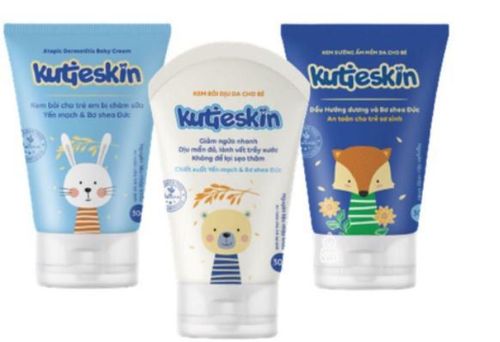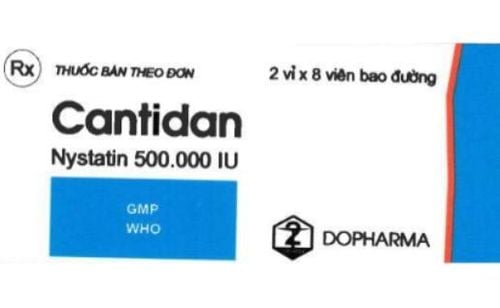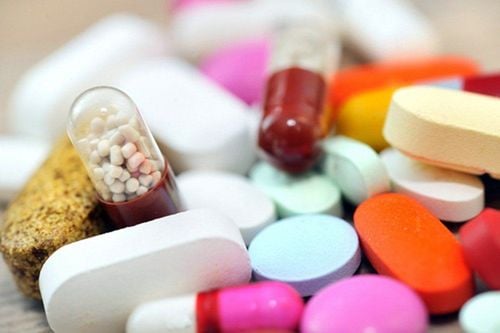This is an automatically translated article.
The article is professionally consulted with Master, Doctor Nguyen Minh Son - Interventional Cardiologist - Department of Medical Examination & Internal Medicine - Vinmec Nha Trang International General Hospital.Although diaper rash is caused by a baby's sensitive, wet, and unhygienic skin, diaper rash can also develop due to too much yeast in the area. However, it's not always easy to distinguish diaper rash from a yeast infection. Therefore, as soon as they notice abnormal signs on the child's skin, parents need to take the baby to a medical facility for specialized diagnosis and treatment.
1. What is diaper rash caused by a yeast infection?
Most diaper rash occurrences are related to deterioration of skin integrity rather than to any specific infection. Urine and stool acidity as well as chronic wetness are all factors that contribute to diaper rash in children. However, sometimes a superficial infection of the skin is a factor in diaper rash. The most common infectious cause of diaper rash caused by a yeast infection is the fungus Candida albicans.This fungus grows best in moist places, such as under wet or dirty diapers. Newborns or mothers who are taking antibiotics while breastfeeding are also more likely to develop diaper rash due to a yeast infection.
Fungal diaper rash can start with the tissue around the anus softening and breaking off. The infected area is red, raised, and fluid under the skin can be seen. Small, raised, infected red papules as satellite pustules appear on the periphery of the rash. These satellite pustules are characteristic of Candida diaper rash and allow easy differentiation of diaper rash caused by a yeast infection from other types of diaper rash such as contact (irritant) rash. Common sites of diaper rash caused by a yeast infection can be on the thighs, genital folds, abdomen, and right at the genitals. Meanwhile, contact diaper rash doesn't involve these areas because these are overlapping layers of skin that "protect" that area of skin from coming into contact with harmful irritants.
In addition, candida in children can come from the upper gastrointestinal tract, the lower gastrointestinal tract, or from caregiver contact. Candidiasis diaper rash can be accompanied by a candida infection of the mouth (thrush). Breastfed infants with thrush can unknowingly infect the mother's nipple/areola area.
2. What are the causes and risk factors for diaper rash caused by yeast infections?
The need to wear diapers is a major contributing factor to diaper rash, including diaper rash caused by yeast infections. Cotton underwear is much better suited for the skin to breathe and prevents yeast growth, while cloth diapers and non-absorbent disposable diapers both contribute to yeast growth.At the same time, many pediatricians believe that a yeast infection in an infant's mouth (thrush) is a risk factor for developing yeast diaper dermatitis. Finally, recent oral antibiotic use may also encourage intestinal yeast overgrowth.
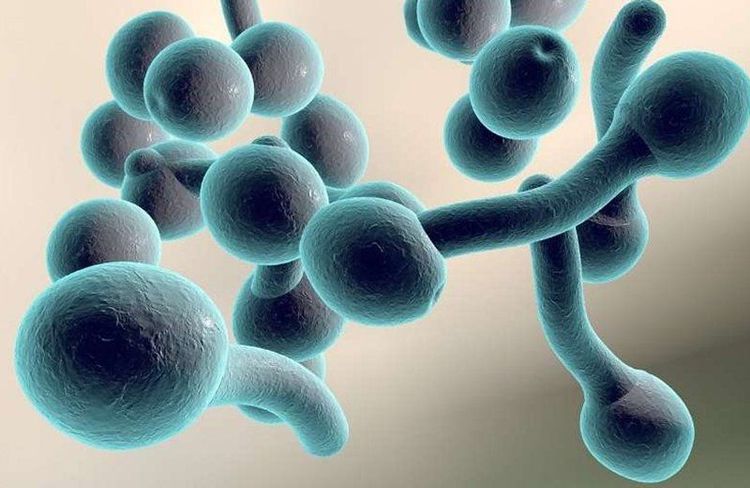
Nấm Candida albicans là nguyên nhân chính gây ra tình trạng hăm tã do nhiễm trùng nấm men
3. Symptoms of rash in diaper rash caused by yeast infection
Local symptoms of diaper rash caused by a yeast infection include:A deep red rash with a slightly raised border. Pimples, blisters, sores, or sores filled with pus. The rash is only under the diaper, does not spread to other areas. Red or scaly skin (for boys on the testicles and penis, for girls on the labia and vagina). There are satellite lesions or smaller red patches that connect to other patches. If your baby's symptoms persist for a few days despite prompt diaper changes, cleaning and drying of the diaper area, and the use of an over-the-counter diaper rash cream, that's a sign that may be contributing. confirmed that yeast is the culprit for diaper rash.
4. How to treat diaper rash caused by yeast infection for children?
Parents or caregivers may not need to take their child to the doctor to treat diaper rash caused by a yeast infection. However, it's best to contact your pediatrician with any questions or concerns to be sure your child has a yeast infection.In most cases, such infections can be relieved by topical cleansing in combination with over-the-counter topical medications. Specifically, there are three easy-to-find antifungal creams, including Mycostatin (nystatin), Lotrimin (clotrimazole) and Monistat-Derm (miconazole micatin). Which type to use should consult your pediatrician if unsure.
If the skin infection does not improve after 4 to 7 days of treatment as above, the child needs to be examined and evaluated. 1% hydrocortisone cream may also be indicated for severe diaper rash skin rashes.
Along with using antifungal creams, parents and caregivers also need to keep the area clean and dry and try to spend a possibly diaper-free period during the day.
The following home care tips can help treat and prevent diaper rash caused by yeast infections and other causes for your baby:
Change diapers often. Keep skin clean and dry. Use alcohol-free and fragrance-free wipes. Clean with mild soap and warm water. Consider using a barrier patch to help protect the skin. Choose to use unscented products for your baby's skin. It's best to ask your doctor before using any home remedy on your baby's skin, even natural products, such as essential oils, can be harmful.
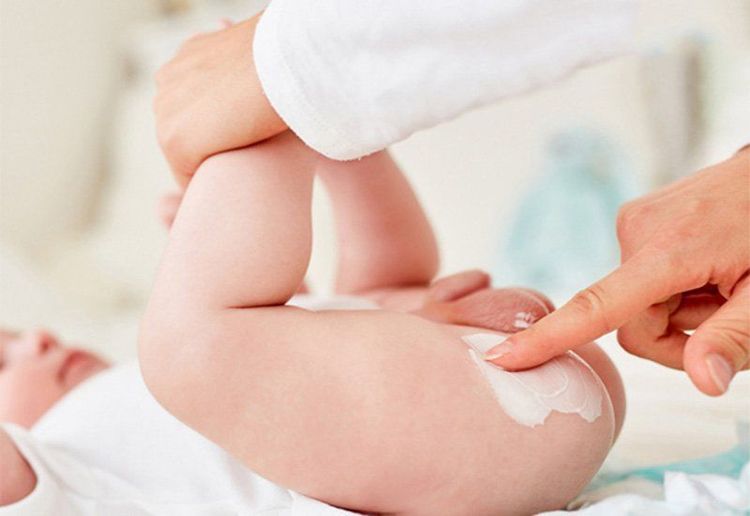
Hăm tã do nhiễm trùng nấm men điều trị bằng cách giữ vệ sinh và kết hợp với các thuốc bôi
5. When does a child with diaper rash need to see a doctor?
Get medical attention if your baby has a fever or a rash that starts to ooze pus, open sores, boils, or blisters. This could indicate a diaper rash that is caused by a bacterial infection and requires specialized medical attention.If the baby is less than 6 weeks old, it is still best to consult with a doctor to make sure that a parent or caregiver is treating the diaper rash properly.
6. How can I prevent diaper rash caused by a yeast infection?
Keeping your baby's bottom clean and dry is the best prevention and treatment for diaper rash caused by a yeast infection. At the same time, the following tips can also help your child avoid this problem in the future:Avoid using perfumed or alcohol-based baby wipes. Make sure cloth diapers are washed two to three times in the washing machine and do not use fabric softeners or perfumes. Change your baby's diaper as soon as he or she urinates or passes raw stools. Clean the diaper area gently with warm water with each diaper change. Give your baby a chance to breathe by limiting diapers to half an hour several times a day. Pat the area dry or let it air dry before putting on a new diaper. Avoid making the diaper too tight, as this can irritate the skin. Use a well-absorbent, breathable diaper to avoid keeping moisture on your baby's skin. Wash your hands before and after changing diapers. If a parent, caregiver or child is in need of antibiotics, take these precautions aggressively.
In short, a baby's skin rash, red rash because of diaper rash always makes parents very worried. Although this condition is quite common, diaper rash caused by yeast infections will quickly improve with early detection, application of antifungal cream combined with careful skin hygiene in place.
Currently, the Pediatrics Department at Vinmec International General Hospital is trusted by many parents to examine the diseases that infants and young children are susceptible to. Vinmec brings satisfaction to customers and is highly appreciated by industry experts by:
Gathering a team of leading pediatricians: including leading experts with high professional qualifications ( professor, associate professor, doctorate, master), experienced, worked at major hospitals such as Bach Mai, 108.. The doctors are well-trained, professional, have a heart - a vision. Understanding young psychology. In addition to domestic pediatric specialists, the Department of Pediatrics also has the participation of foreign experts (Japan, Singapore, Australia, USA) who are always pioneers in applying the latest and most effective treatment regimens. . Comprehensive services: In the field of Pediatrics, Vinmec provides a series of continuous medical examination and treatment services from Newborn to Pediatric and Vaccine,... according to international standards to help parents take care of their baby's health from birth to childhood. Advanced techniques: Vinmec has successfully deployed many specialized techniques to make the treatment of difficult diseases in pediatrics more effective: neurosurgery - skull, stem cell transplant blood in cancer treatment. Professional care: In addition to understanding children's psychology, Vinmec also pays special attention to the children's play space, helping them to play comfortably and get used to the hospital's environment, cooperate in treatment, improve the efficiency of medical treatment.
Please dial HOTLINE for more information or register for an appointment HERE. Download MyVinmec app to make appointments faster and to manage your bookings easily.





